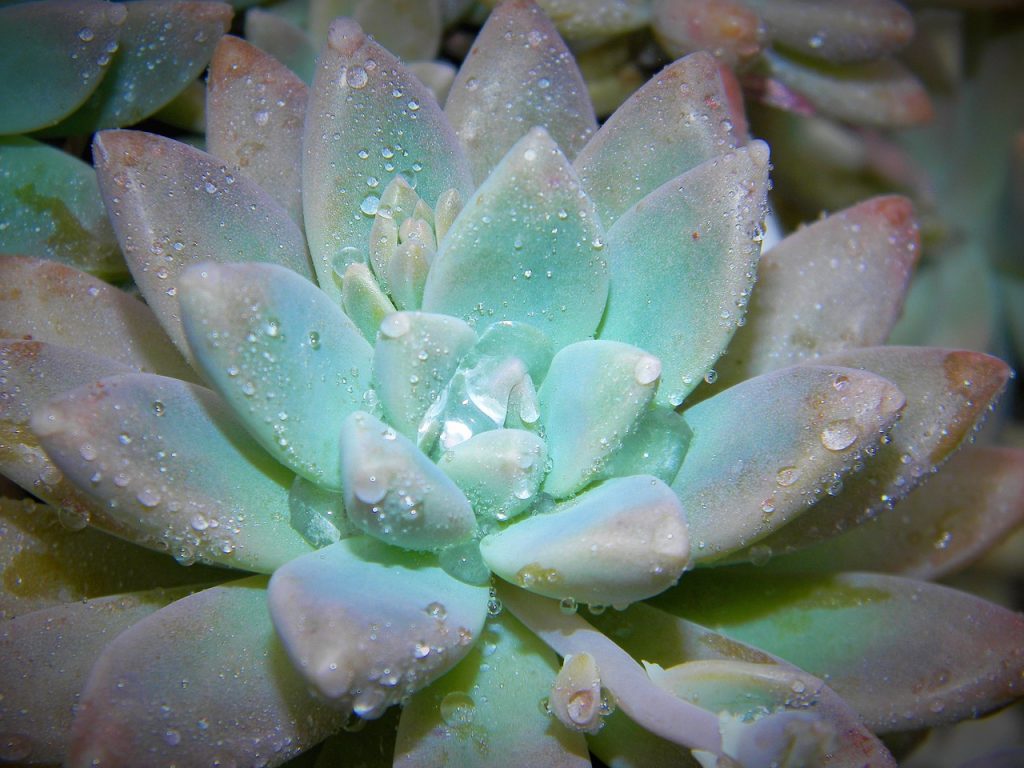If you are new to growing succulents, you may wonder whether or not these plants can survive in extreme environmental conditions. Some people may live in an area that gets extremely hot in summer, and others reside in places that get quite cold in winter. So can succulents withstand such cold conditions? The answer is it depends on the type of succulents you are growing. There are succulents that can thrive during winter while others cannot.
In most cases, cold temperature makes it hard for succulents to survive. The combination of extremely cold temperature and minimal presence of sunlight is a threat to almost every well-known succulent. The increased temperature mostly increases the rate of chemical reaction in the plants. As a response, a plant will need more oxygen, carbon dioxide, and a supply of water. A lack of water may cause wilting.
On the other hand cold conditions slow down the process. Because of the presence of ice, parts of the cell in plants may freeze which can cause damage and interruption in the pathway of nutrients and water flow. At some point, it may cause the death of succulents. Luckily not all succulents hate the winter. Some actually love it, and we will have a look art the list right now!

Succulents that can survive outside in winter
- Sempervivum. It is rosette-forming succulents that produce abundant offspring and it is also known as hens and chicks. These succulent species are capable of adjusting and adapting to their environment, including very cold conditions.
- Winter Hardy agave. Usually, Agaves form a beautiful rosette of usually thick, rigid, fleshy leaves with marginal teeth and a sharp terminal spine. They are mostly monocarpic, they flower once and die thereafter. Some Agaves produce offsets that will happily replace the dead plant. And the best part–they do not mind cold temperature.
- Cobweb Sempervivum Arachnoideum. Cobweb Sempervivum obviously forms prominent trichomes or hair-like filaments. It is the trichomes that break up the flow of air around the leaves and it protects them from drying out. It also prevents ice crystals from forming directly on the surface of the leaf, which makes this plant frost-hardy.
- Delosperma. A very popular with commercial plantings and It is also known as ice plant. It has an amusing low maintenance ground cover that creates blankets of dazzling blooms that causes the attraction of butterflies and honeybees.
- Cold Hardy Succulent Cactus. Opuntia Pinta Rita is an example of it that has an extraordinary coloring. The leaf pads are turquoise the projects a vivid, amethyst purple/magenta with the slightest stress. Opuntias can survive a lot, including relatively cold temperatures.
- Coldy Hardy Jovibarba/Sempervivum Heuffeli. It is similar in the form and habit to the hens and chicks (Sempervivum) This type of succulents is richly colored and maintains its vivid hue instead of intensifying and fade with seasons. It develops a baby rosette in between the leaves of the mother plant for an extraordinary appearance.
- Orostachys. They refer to it as a charming winter succulent that deserves to be more widely grown. An example of it which is Orostachys Iwarenge forms a low mat of rosettes that sooner or later will begin to elongate into conical forms that have a pink blush that can reach 6’’ tall.
- Stonecrop Sedum Winter. It has amazing forms and color and an example of it is the stonecrop Sedum Fuldagut or fire glow. In the sun, the bronze-colored green leaves it has will turn into coppery then a deep burgundy in the fall.
Extra care for succulents that stay outside in winter
As you can see on my list, many succulents can survive outside in winter. The question is though how you should adjust your care to make them thrive, or at least survive until spring returns. Let me give you a few crucial tips.
- Lessen the frequency of watering. During winter, soils are rich in water because of the humid that winter brings. Obviously, the best thing you can do is to lessen the watering frequency. Because an abundant amount of water is the quickest way to kill a succulent.
- Check for Bugs. Despite the cold season, bugs are inevitable. Since bugs are a hindrance to the growth of succulent, keep them away as much as possible. Inspect them closely for mealybugs which is the most common pest of succulents.
- Make sure it receives plenty of sunlight. It is necessary for succulents to receive sunlight outside. Aside from it is necessary to complete the photosynthesis, sunlight also provides that warm that succulents need in order to avoid freezing. Move it to a place where it receives direct sunlight and removes anything that covers the succulent.
- Remove the snow from the pot. The abundant amount of snow could cover the entire succulent. What’s more, it may cause frost damage because of the temperature drop. It may kill the succulent because of too much water when the snow starts to melt. Hence removing the snow (or at least most of it) is the best thing you can do for your succulents.
- Watch your succulent if it’s freezing.
Winter season usually causes frost damage. You consider putting your succulent inside (or at least to some outside room where temperature doesn’t drop that much, such as close to the walls of your house), especially when it gets super cold. Sure enough, succulents can survive a lot, but it doesn’t mean that you have to take chances…
Final thoughts
Winter season is hard for succulents, but once you know which succulents can survive outside in winter, and how to take care of them during the cold weather period, they should survive, so they can start growing and blooming again once the spring and summer arrives. For additional information on growing succulents, feel free to visit my complete guide on succulent growing. Thank you!
